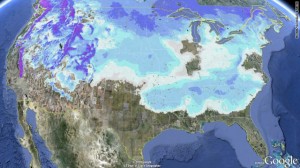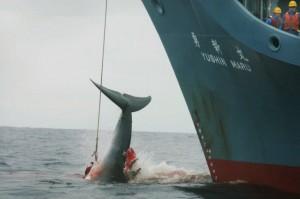Don’t you hate it when you misplace something important? It’s a great relief when you find it, right? Well, not always. For the last decade or so, climate scientists have been searching for some missing heat. Climate models had suggested a certain rate of warming in the atmosphere based on our increasing rate of carbon emissions, but measurement showed a lower rate of warming over the past decade than predicted. Clearly some heat had gone missing.
Found it. A recently published  study has confirmed that the missing heat was actually not missing at all, but simply absorbed by the deep ocean – below 1,000 feet. In fact, according to the study, global warming hasn’t slowed over the past decade, but actually accelerated over the past 15 when the heat absorbed in the deep oceans is factored in.
study has confirmed that the missing heat was actually not missing at all, but simply absorbed by the deep ocean – below 1,000 feet. In fact, according to the study, global warming hasn’t slowed over the past decade, but actually accelerated over the past 15 when the heat absorbed in the deep oceans is factored in.
This makes sense, in that the Earth is mostly covered in water so you’d expect the oceans to act as a heat sink for the atmosphere given the contact area involved. Apparently, budget issues have been limiting heat mapping of the oceans to its upper layers, but recent low-cost robotic deployments (described here) have started to paint a fuller picture of the ocean heat sink effect on atmospheric warming. This will help climate scientists build better informed models and projections. A recent article in The Economist touches on why finding the missing heat is so important – its absence raises numerous questions about the sensitivity of the overall climate system to the introduction of increasing levels of greenhouse gases.
There’s another nice piece outlining the study’s salient points here that leads off with a mention of why this new study is so important to the ongoing struggle for popular understanding of the urgency of our climate problem. The missing heat, you see, has been more than a scientific head scratcher.
It’s also been an asset to those seeking to discredit and undermine the case for anthropogenic global warming. The ocean cycles and interacts in dynamic ways with the atmosphere that we don’t yet fully understand. Nature, unfortunately, really does not care about your politics, PR or stock portfolio. The system continues on its way, not waiting for our understanding of it to catch up. Heat absorbed in the deep ocean is not likely to stay there. The effects of this deep ocean heating are likely already playing out, leaving me to wonder what we will we find next?





 Giant’s An Le in a charity ride. Photo by Jake Orness.
Giant’s An Le in a charity ride. Photo by Jake Orness.



 How you receive these stats depends heavily on what you believed about climate change prior to reading this post. But even if you’ve bought in to the idea that climate change is occurring and is perilous, big numbers have a way of overshooting emotions.
How you receive these stats depends heavily on what you believed about climate change prior to reading this post. But even if you’ve bought in to the idea that climate change is occurring and is perilous, big numbers have a way of overshooting emotions. Iran is caught in a similar rock-and-a-hard-place
Iran is caught in a similar rock-and-a-hard-place 


